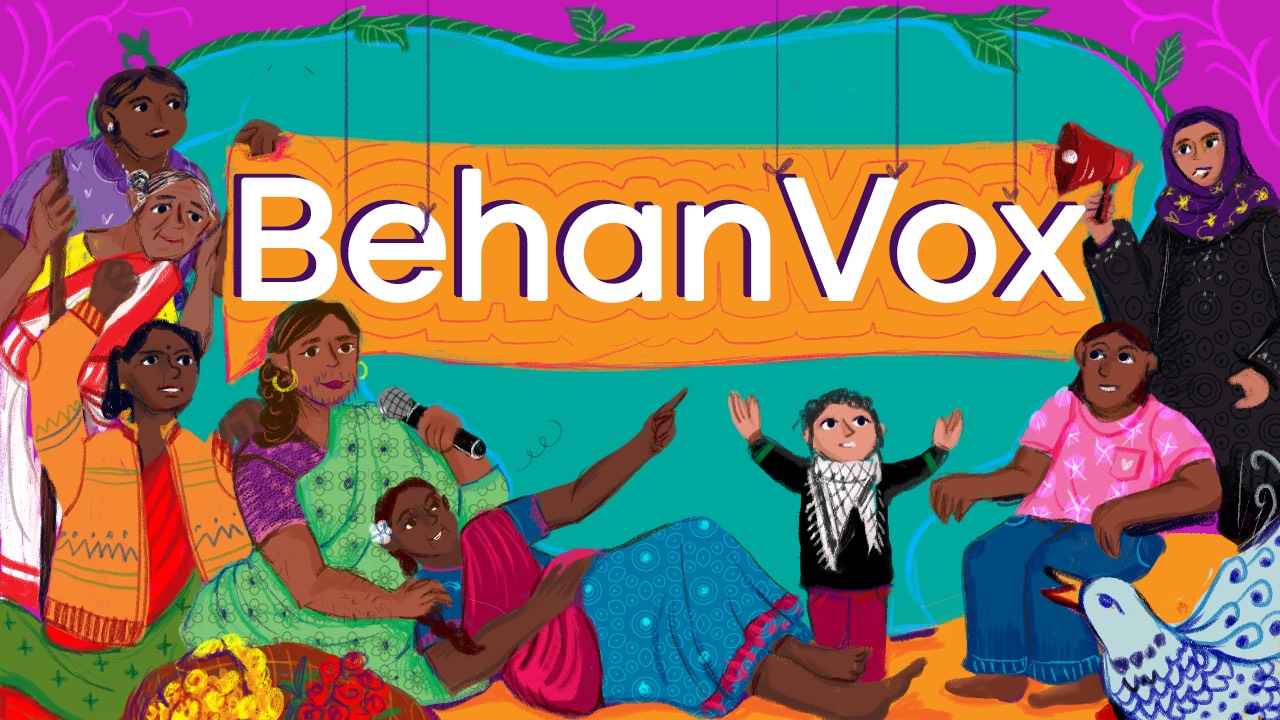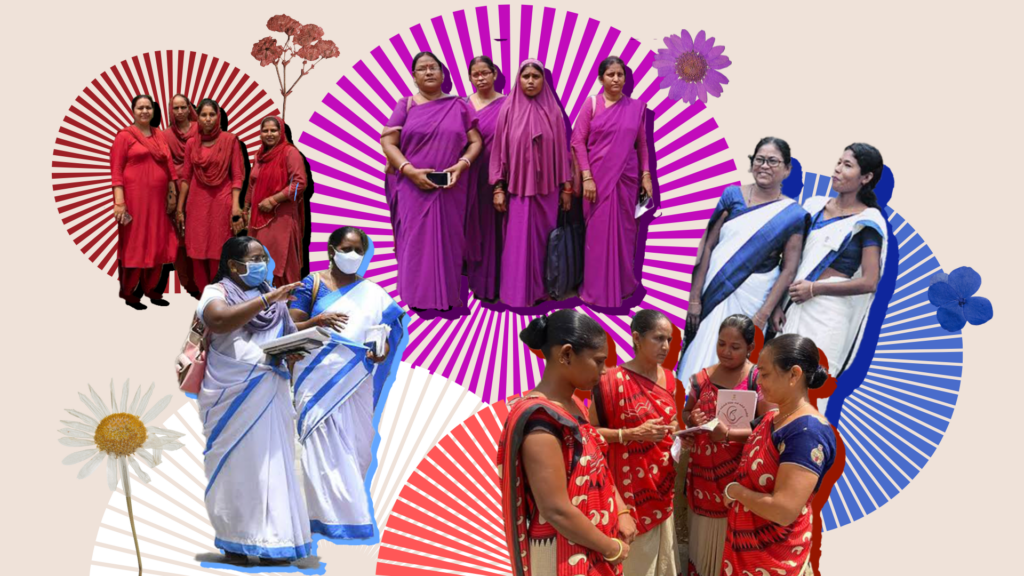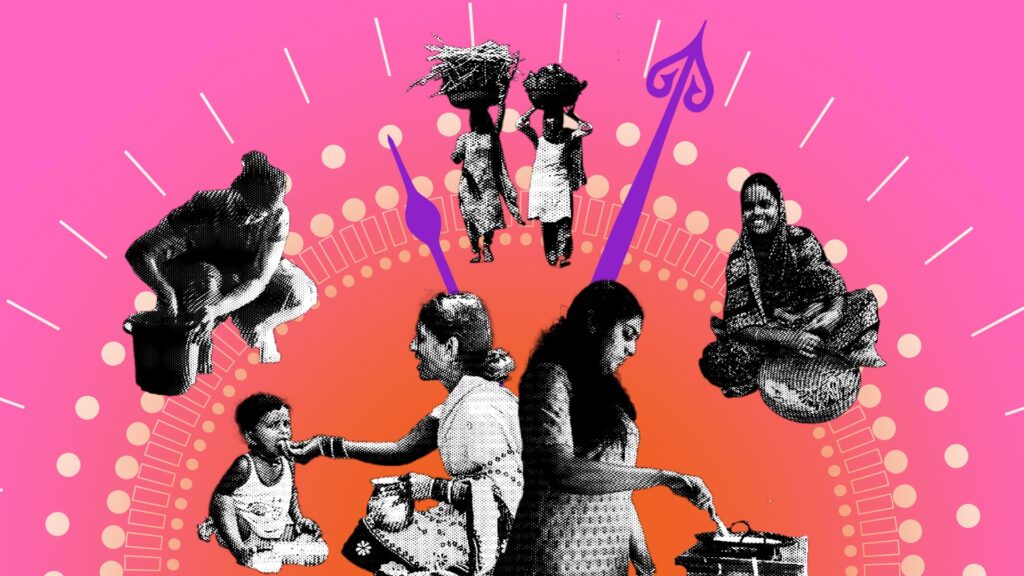We are celebrating 2025 as the year of ASHA workers, 20 years of singular contribution to ensuring better health access for women, children and adolescents living in the country’s remotest corners. Our series this year, the ASHA Story is a feminist historiography of their lives that goes beyond the usual – it talks of their larger challenges but also delves into the nuances of their fascinating everyday life.
This week we bring you a delightful story by Saumya Kalia on the ASHA vardi or uniform. There is no standard outfit prescribed for the cadres, each state has its own. It could be the sari, the salwar kameez or the jainsem of the north east. It is coffee coloured in Madhya Pradesh, orange in Maharashtra and purple in Kerala and red and white in Haryana. But it is more than just a colour or a style. It is a symbol of solidarity, say the ASHA workers, a marker of their unique place in the community.
For Lakshmi Kaurav the two faded coffee coloured saris with beige borders sitting on her shelf are her pehchaan (identity) as a frontline healthcare worker. So not only does she wear it to work, the pallu draped over her shoulders, but also to events where she and her colleagues need to show solidarity. “We decided that whenever there is a protest or event, like a meeting with the chief minister, we will wear our uniforms, even if we aren’t on duty,” she says.
The uniforms are more than a few yards of fabric, stitched or unstitched. They reflect many underlying issues of politics and culture, some harking back to the national movement and others to issues of social hierarchy.
For the last 13 years ASHA workers have been fighting for the right to wear a uniform so that they are distinctly recognised as government workers with rights to a fair salary and benefits. Part of the demand has been fulfilled but the state still sees them as volunteers, doing seva in the prescribed mould of a selfless woman in a patriarchal home. But ASHA workers do not see them in this role, they work hard taking on multiple roles – often beyond their original mandate – and are demanding that they be seen as deserving of labour rights. The Kerala strike by the cadres – squatting outside the Secretariat in their purple sarees – is a potent symbol of this.
“Sab humein aam samajhte the pehele (everyone thought us common people earlier),” says Sunita, an ASHA facilitator from Haryana. “Now people see value in our work — be it giving polio vaccines or helping pregnant women with delivery.”
What they now want is that the divisions of colour be done away with – between rural and urban, one state and the next – so that no one ever stands apart in a campaign of solidarity.
Read the story here.






